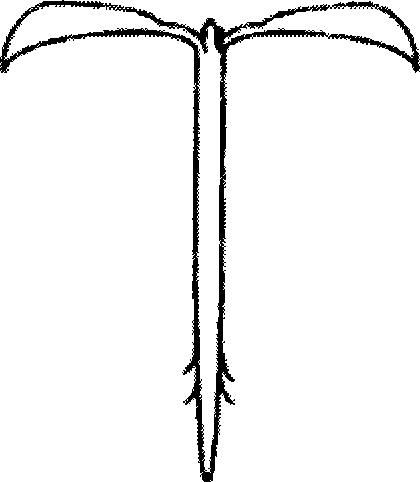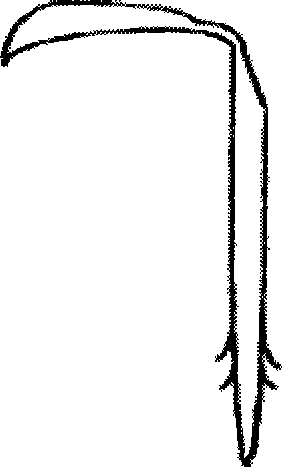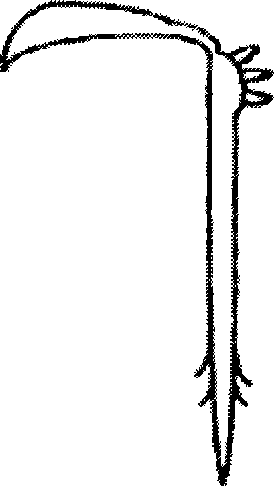Green cucumber high-frequency regeneration method
A high-frequency, plant-based technology, applied in the field of plant biology, can solve the problems of long plant regeneration cycle, large clone variation, and low plant regeneration frequency, and achieve the effects of improving production efficiency, simple operation, and saving technical costs
- Summary
- Abstract
- Description
- Claims
- Application Information
AI Technical Summary
Problems solved by technology
Method used
Image
Examples
Embodiment 1
[0028] Embodiment 1: the method for high-frequency cucumber regeneration plant of the present invention, its steps are as follows:
[0029] a. The inbred line 'IL69' was used as the experimental material. The inbred line 'IL69' was isolated from the selfed progeny of Jinza 2, which has the characteristics of strong growth vigor, high resistance to downy mildew, long fruit shape, and ribs. Select the plump cucumber inbred line 'IL69' seeds free from diseases and insect pests, disinfect the surface with 0.1% mercuric chloride for 8 minutes, rinse with sterile water for 5 times after disinfection, blot the water on the surface of the seeds with sterile filter paper, and inoculate them into MS The culture medium was placed in a 26°C incubator to cultivate seedlings. The amount of agar used in the MS medium was 0.7%, the medium was sterilized at 121° C. for 18 minutes, and the pH of the medium was 5.8. Select the seedlings that are thick and strong and have just exposed true leav...
Embodiment 2
[0036] Embodiment 2: In this embodiment, the cucumber material is an inbred line 'IL69', and the seedling age is 3 days, the seedling height is 4 cm, and the hypocotyl diameter is 5 mm. The culture temperature was 24°C and the light intensity was 50 μmol m -2 ·s -1 , Photoperiod 12h / d. Bud induction medium is MS+0.6mg / L6-BA+0.6mg / L AgNO 3 +30g / L Suc, the bud growth medium is MS+1.0mg / L6-BA+0.6mg / L AgNO 3 +30g / L Suc. The operating procedures and methods of tissue culture are the same as in Example 1.
Embodiment 3
[0037] Embodiment 3: In this embodiment, the cucumber material is an inbred line 'IL69', and the seedling age is 2 days, the seedling height is 3.5 cm, and the hypocotyl diameter is 4 mm. The culture temperature was 25°C and the light intensity was 50 μmol m -2 ·s -1 , Photoperiod 13h / d. Bud induction medium is MS+0.5mg / L6-BA+1.0mg / L AgNO 3 +30g / L Suc, the bud growth medium is MS+1.2mg / L6-BA+1.0mg / L AgNO 3 +30g / L Suc. The operating procedures and methods of tissue culture are the same as in Example 1.
[0038] The plant regeneration situation of table 1 embodiment 1~3
[0039]
PUM
 Login to View More
Login to View More Abstract
Description
Claims
Application Information
 Login to View More
Login to View More - R&D
- Intellectual Property
- Life Sciences
- Materials
- Tech Scout
- Unparalleled Data Quality
- Higher Quality Content
- 60% Fewer Hallucinations
Browse by: Latest US Patents, China's latest patents, Technical Efficacy Thesaurus, Application Domain, Technology Topic, Popular Technical Reports.
© 2025 PatSnap. All rights reserved.Legal|Privacy policy|Modern Slavery Act Transparency Statement|Sitemap|About US| Contact US: help@patsnap.com



